|
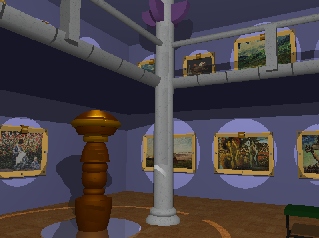 |
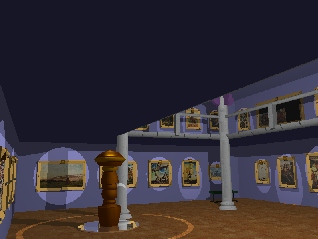 |
Radiance Interpolants for Interactive Scene Editing and Ray Tracing
Kavita Bala
Supervised by Profs. Julie Dorsey and Seth Teller
Laboratory for Computer Science, MIT
Abstract
Ray tracers are usually regarded as off-line rendering algorithms that are too slow for interactive use. My thesis introduces techniques to accelerate ray tracing and to support interactive editing of ray-traced scenes. These techniques should be useful in many applications, such as architectural walk-throughs, modeling, and games, and will enhance both interactive and batch rendering.
The thesis introduces radiance interpolants: radiance samples that can be used to rapidly approximate radiance with bounded approximation error. Radiance interpolants capture object-space, ray-space, image-space and temporal coherence in the radiance function. New algorithms are presented that efficiently, accurately and conservatively bound approximation error.
The interpolant ray tracer is a novel renderer that uses radiance interpolants to accelerate both primary operations of a ray tracer: shading and visibility determination. Shading is accelerated by quadrilinearly interpolating the radiance samples associated with a radiance interpolant. Determination of the visible object at each pixel is accelerated by reprojecting interpolants as the user's viewpoint changes. A fast scan-line algorithm then achieves high performance without sacrificing image quality. For a smoothly varying viewpoint, the combination of lazily sampled interpolants and reprojection substantially accelerates the ray tracer. Additionally, an efficient cache management algorithm keeps the memory footprint of the system small with negligible overhead.
The interpolant ray tracer is the first accelerated ray tracer that reconstructs radiance from sparse samples while bounding error conservatively. The system controls error by adaptively sampling at discontinuities and radiance non-linearities. Because the error introduced by interpolation does not exceed a user-specified bound, the user can trade performance for quality.
The interpolant ray tracer also supports interactive scene editing with incremental rendering; it is the first incremental ray tracer to support both object manipulation and changes to the viewpoint. A new hierarchical data structure, called the ray segment tree tracks the dependencies of radiance interpolants on regions of world space. When the scene is edited, affected interpolants are rapidly identified and updated by traversing these ray segment trees.
For details: thesis, and shorter version published in TOG
Motivation: Ray tracing produces high quality images, but is slow.
|
 |
 |
Insights:
How to accelerate ray tracing
Accelerate Shading
with guaranteed error bounds
Accelerate Visibility
computation
Accelerating shading with guaranteed error bounds
Ray tracers compute radiance; treat ray tracing as a sampling problem.
High-Level Algorithm
Ray parameterization
Collecting, storing and reusing samples: 4D linetrees
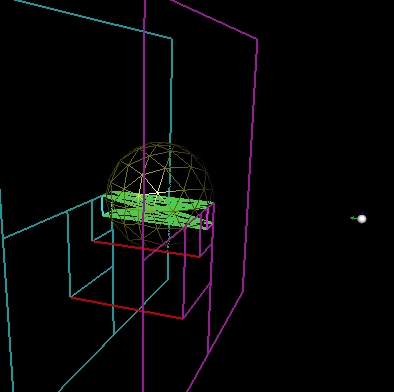 |
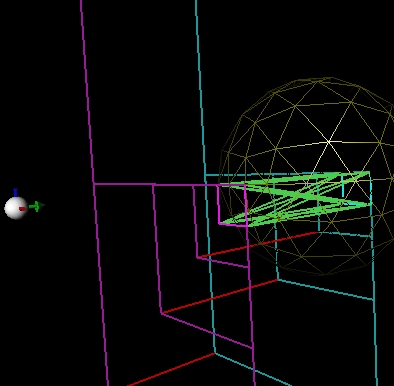 |
| Magenta rectangles are on the front face of linetree. Blue rectangles are on back face of linetree. | Green rays are the 16 sample rays associated with the linetree cell. |
Guaranteed error bound
Note the Error-driven subdivision.
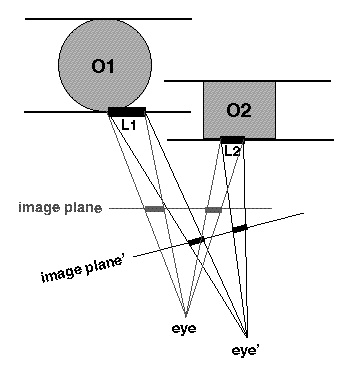 |
 |
| Reproject linetree cells from previous frame. | Detect occlusion using shaft culling. |
Results
Additional Results
When an object is edited (moved,
attribute changed) the entire scene need not be re-rendered from scratch.
Part of the scene that is affected
is:
Insight:
+ The interpolants
affected by an edit can be rapidly identified using an auxilliary data
structure - ray segment trees.
When a radiance interpolant is updated, all
rays
covered by the interpolant are updated.

Light rays, occluders, reflections.
For each case, we would like to track the regions of space that affect an interpolant
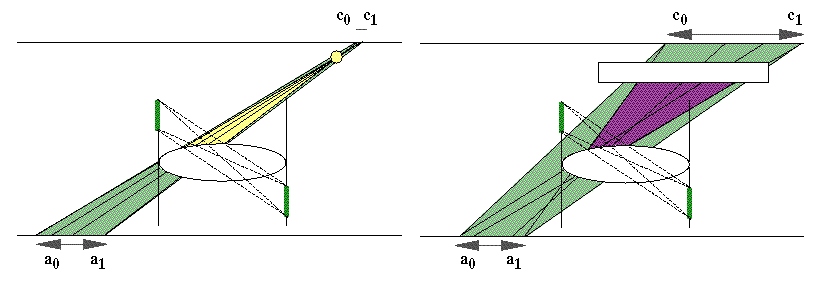
Problem with 4D rays is that it is too conservative.
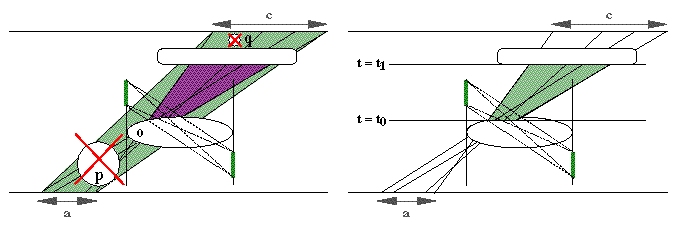
Therefore use an extra parameter t, which is the distance
along the ray.
Identify a new space called Ray
segment space.
Important property:
A box in ray segment space is a shaft in world space.
Can build trees, called ray segment trees,
over ray segment space, that stores all the interpolants dependencies.
Results
When an object is edited
Affected interpolants are typically
identified
in 0.1 seconds by walking down the ray segment trees.
Affected interpolants are typically
updated
in 1 second.
Page maintained by: Kavita
Bala (kb@graphics.cornell.edu)
Last updated: September 22 1999